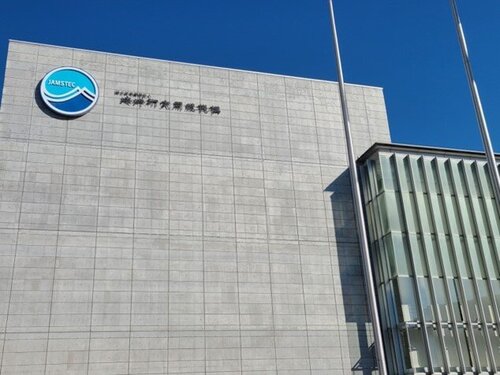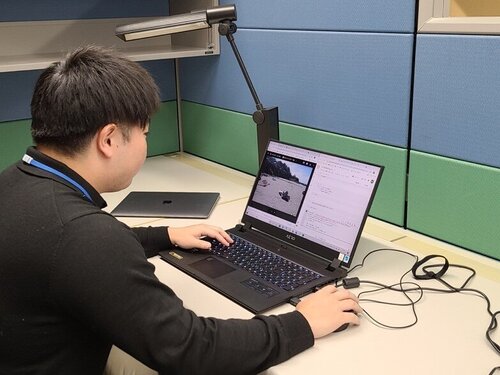ACTIVITYActivity reports
- HOME
- Activity reports
- JAMSTEC Internship Report (KOSHIDAWA, Course of Maritime Technology and Logistics)
JAMSTEC Internship Report
(KOSHIDAWA, Course of Maritime Technology and Logistics)
Three times a week for one month from September 1 to October 1, I participated in an internship in the Information Engineering Program of the Research Institute for Value-Added-Information Generation at the Japan Agency for Marine-Earth Science and Technology (JAMSTEC).
 Yokohama Institute for Earth Sciences
Yokohama Institute for Earth Sciences
The project in which I took part was the automatic detection of marine debris using AI. Since I had never studied object detection before, it was a first attempt for me. In the internship, I was given two tasks.
The first task was classifying the difficulty of and examining the annotation of images of debris. Since annotation is very straightforward work that also needs to be conducted with precision, it requires outsourcing. However, if all of the captured images are outsourced, costs will be wasted as some of the images will not contain any debris at all. In addition, if the images are too grainy or the number of items of debris is extremely large, this may affect the accuracy of the model when the annotated images are used for learning. Accordingly, this task was also important from the perspective of obtaining annotated images in line with our goal of creating a model. The first step was to take grayscale labeled images of just the human-made debris and obtain the number of items of debris, as well as the number of pixels within each image occupied by debris, by counting everything except the background, for which "0" was input. Next, I divided the numbers of items of debris and numbers of pixels that I obtained into three levels each, for a total of nine categories. However, in the feedback that I received after the task was finished, it turned out that the images had different sizes, so I realized that it made no sense to count the number of pixels. In the end, I therefore decided to calculate the proportion of the image taken up by the debris based on the image size, instead of counting the number of pixels.
The second task was to actually create a model that detects debris using images of debris. In order to undertake this task, I first selected an object detection model. There are currently three well-known object detection models: Faster R-CNN, SSD, and YOLO. Faster R-CNN is good at detecting small objects, and SSD has a high computing speed. On the other hand, not only is YOLO faster than Faster R-CNN, but it also rarely detects false positives in the background, and real-time detection is standardized. Accordingly, I chose YOLO this time so that real-time detection would be possible in the future and used the latest version, YOLOv5. To annotate the images of the debris, I used an annotation tool provided by Microsoft, called VoTT. The reason why I chose VoTT is because I personally found it easier to use compared to other annotation tools.
Work scene
After generating a total of about 200 annotated images, I reformatted the files using a website called Roboflow so that they could be used for learning with YOLOv5, along with augmenting the data and resizing the images. Using this learning data with YOLOv5, the model was completed in about five hours. When I actually input images of debris into the model, it was able to detect most of the debris. However, it was unable to detect overlapping debris and long, twisting items like rope. I intend to explore improvements related to these issues going forward. This concludes my explanation of what I learned and practiced in the internship.
Although there were few employees present in person due to the pandemic, the internship served as a valuable opportunity for me to experience the actual atmosphere in the field and the tension of being expected to produce results. I am currently continuing to take part in the project as a research assistant.
Finally, I would like to express my gratitude to everyone who made this wonderful opportunity possible for me. Thank you very much.
KOSHIDAWA, 1st year student, Course of Maritime Technology and Logistics,


